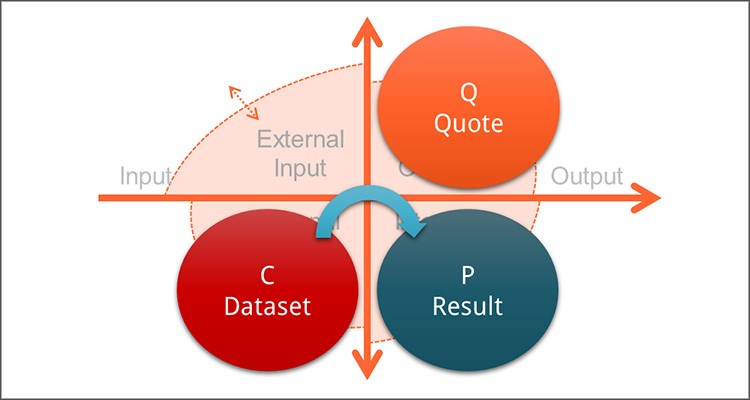Do you know how to maximize the P (pricing) in your CPQ (Configure Price Quote) solution? I will unleash some ideas about best practice for implementations with Tacton.
Do you remember my post about configuration system setup? No? You can read it here >>
This time I want to cover the right end of the matrix and especially the lower quadrant, the pricing, and the result of the configuration.
The dataset in the configurator (the C), is used to create the result (the P). It is done by the input from the customer in the upper left quadrant. We also use the result to create the quotation (the Q).
The complexity
The complexity lies in the fact that the result is dynamic and the description above is very simplified.
- The B2B sales process is often long and consists of many iterations.
- The customer requirements are changing.
- The product evolves and gets developed along the way.
All this needs to be addressed.
But handling the result is also much about collecting a complete configuration. It’s important to have a CPQ solution with a strong configurator that always offers a complete and valid configuration. This means that when we have done an iteration of our configuration we will have the latest available information, and with that we will have updated and correct, configuration result to start doing our pricing.
Why do we need to work on pricing?
If all things are correct from the configurator, then why do we need to adjust it? The configurator will be able to define variants that haven’t yet seen the light of day. There may be standard alternatives for all selections but the combinations of it have never been manufactured. Or we might allow the configurator to select alternatives that are outside the standard selections.
Usually this means that we can have a few scenarios. Most often an engineer-to-order (ETO) flag and an undefined price flag are used for items in the configuration. Sometimes the user should be allowed to add extra champagne for the inauguration too.
This is only about pricing and adjusting the configurator result. There is often a need to price an entire quote containing multiple configurations. We can also have other necessary information from the user roles settings, market settings, price list selections, currencies and so on that externally should influence on the pricing of our configuration.
In order to deliver a full pricing solution the result must be able to calculate and visualize complex pricing models.
- Cost plus margin.
- Price with discounts.
- Pocket pricing.
- Cost-price over time adjustments.
- Etc.
It must also be supported with a quote lifecycle state and lifecycle transition actions.
One last important reminder; just as any process, the pricing process can’t make up for defunct input, but it can be supported better and it should be easy to use and understand. For all parties involved.

